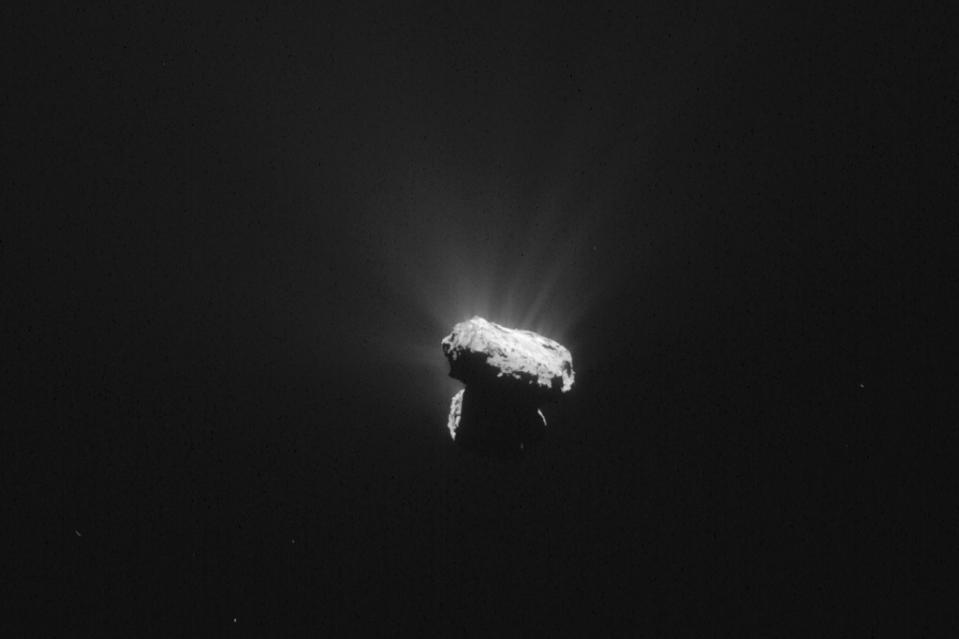
© AFP PhotoIn a "big surprise," scientists have found lots of oxygen on Comet 67P/ChuryumovGerasimenko, captured by the European space probe Rosetta an hour before its closest approach to the sun on August 13, 2015
Stunned scientists announced Wednesday the unexpected discovery of large quantities of oxygen on a comet which streaked past the Sun in August with a European spacecraft in tow.
The find came as a "big surprise" and challenges mainstream theories on the formation of our Solar System, said scientist Andre Bieler of the University of Michigan.
Measurements made by the Rosetta probe suggested that oxygen molecules in the 67P comet's gassy halo must have existed "before or at" its formation, he told journalists.
This may have implications for mankind's understanding of the chemistry involved in the formation of the Solar System some 4.6 billion years ago.
"We believe this oxygen is primordial, which means it is older than our Solar System," said Bieler.

Comment: See also: New study suggests viruses are living entities sharing long evolutionary history with cells